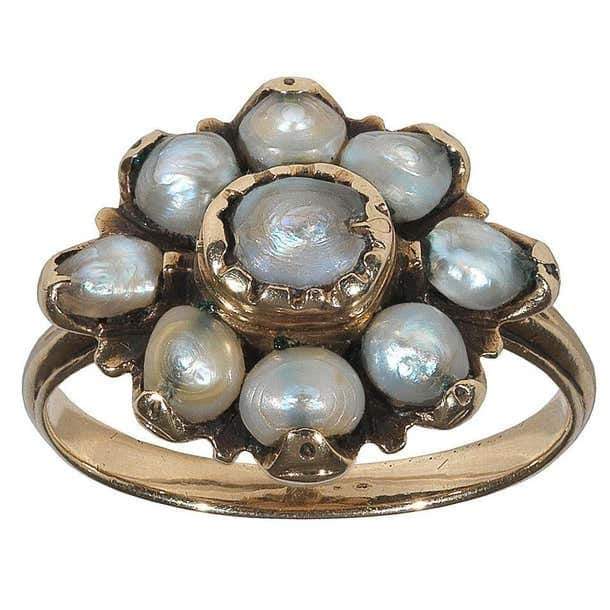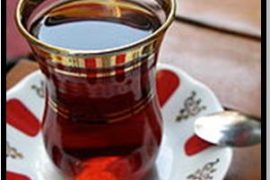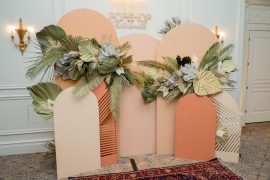Today I want to take you to the discovery of a little-known object of my territory linked to marriage or engagement: the Chianina wedding ring. Arezzo, my city, can be considered one of the oldest in Italy as regards the goldsmith’s art. The manufacturing of jewels has remote origins dating back to the times of the Etruscans who excelled in this form of craftsmanship and boasted skilled goldsmith masters. In the Middle Ages, the goldsmith’s art in Arezzo found its moment of prosperity and specialization in the creation of religious objects. A productive prosperity that also continued in the Renaissance and in the following centuries. At the end of the 1700s the craftsmen created “the Chianini”, rings appreciated by different social classes.
These was born in Val di Chiana the habit of using these rings as wedding gifts, here is the name Chianina wedding rings.
But how were the Chianina wedding rings made?
They were devoid of engravings of names and dates since being handed down they could not refer to a specific person or date. They were generally handed down from mother-in-law to daughter-in-law or in some cases from father-in-law to son-in-law and represented a precious gift to be used for important occasions or parties, so as to be able to keep them intact for the succession. They were kept as if they were relics. The Chianina faith is luminous and light, weighing on average three or four grams, mounted in the shape of a flower with a circle of eight stones or glass inside plus the central one, in coppery gold, therefore reddish and not yellow. Irregular shaped pearls were used, less expensive than the round ones but such as to create a unique beauty given by the peculiar color and the diversity of the shape.
In the early 1900s, no one wanted these old jewels anymore because they were dark, opaque and a little reddish, so goldsmiths began to melt them down and today, unfortunately, very few examples remain, thanks to some far-sighted people who have kept them. Today, to preserve this ancient tradition, the Chianina wedding rings are reproduced: they are not meant to be a fake, but simply a remake of those masterpieces.
To keep the tradition alive it is possible to buy these jewels from some artisans who reproduce them accurately or you can try to find them “original” in antique shops and, if we are lucky, also on the occasion of the antiques fair by wandering through the various stalls.
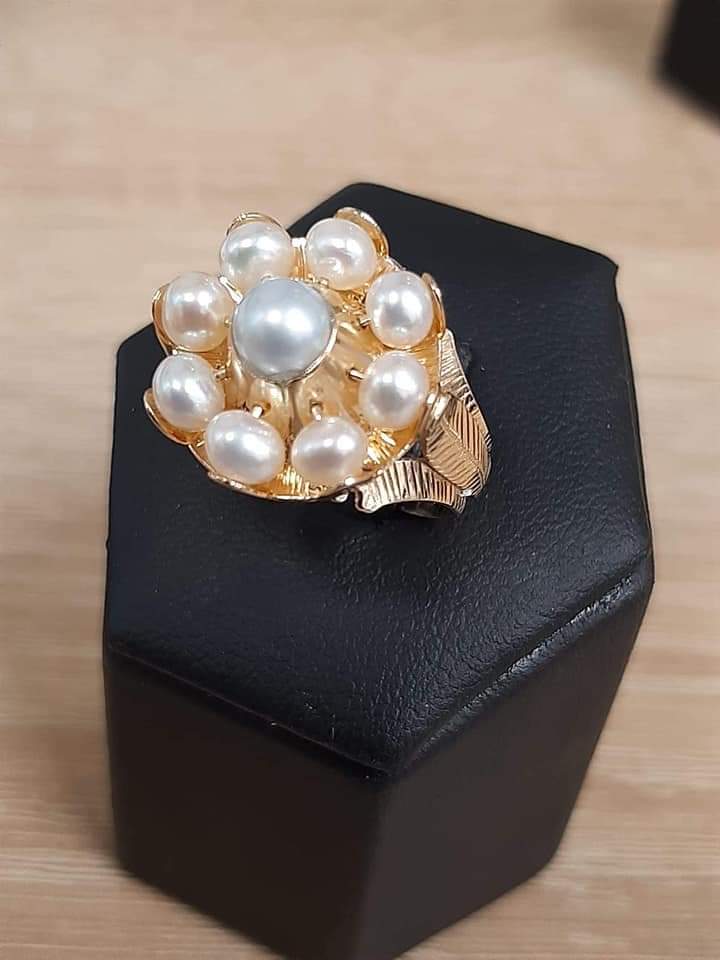
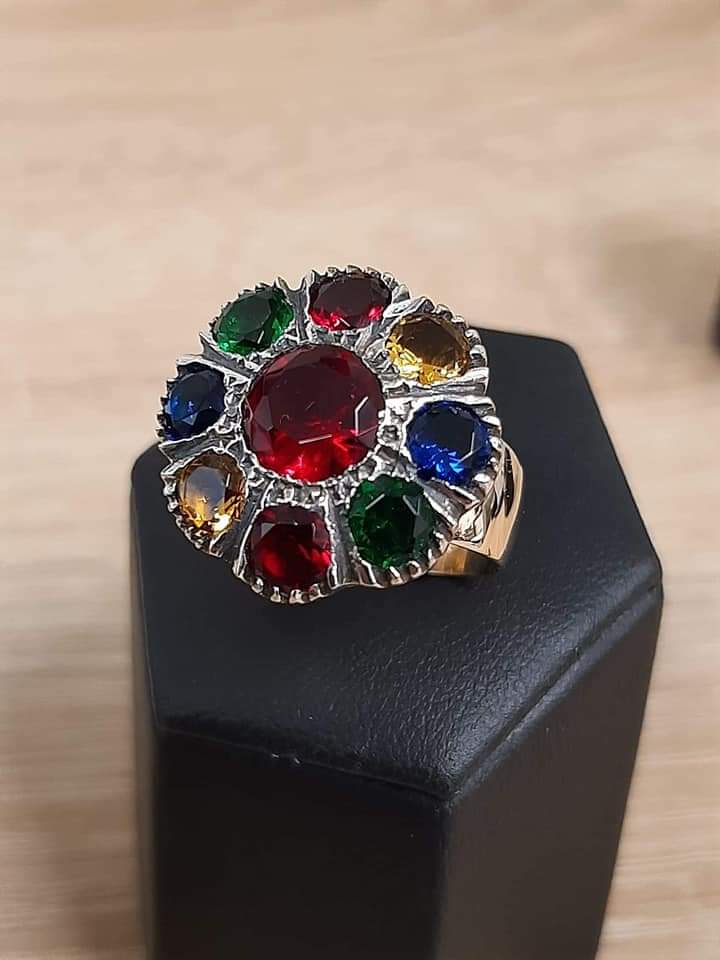
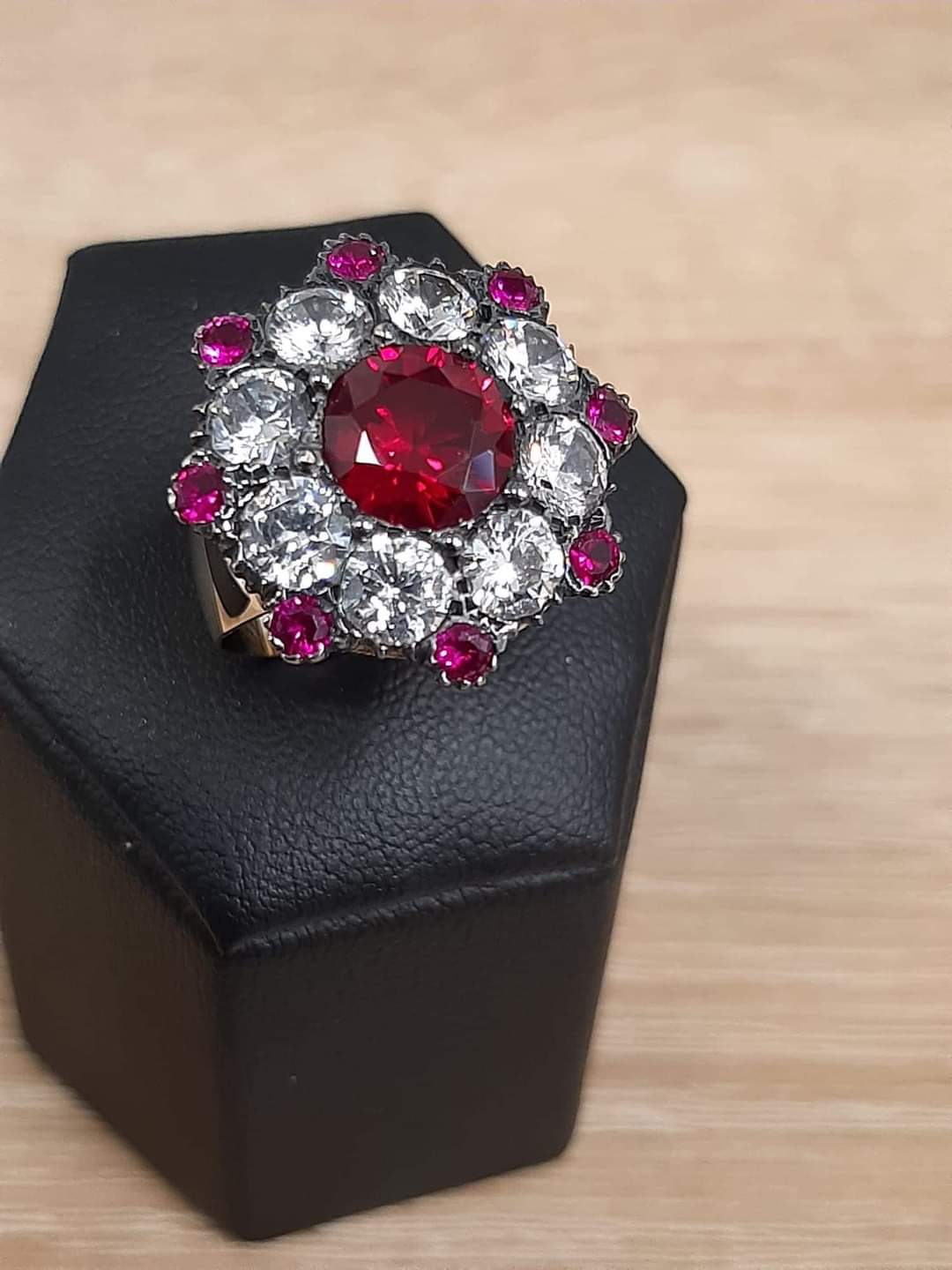
Curiosity
Do you know why faith in Italy is placed on the left hand? There is a belief that a small vein called “vena amoris” (vein of love) flows from the ring finger of the left hand and goes up the arm towards the heart.
And why in gold? Because gold was and still is considered a resistant material that lasts over time and therefore a symbol of eternity, eternal love.
What does the circular shape mean? It is the shape of zero. If the groom’s ring joins that of the bride, the symbol of infinity, an eight, takes shape from two zeros. This is what every couple wishes to be together forever.
Come to see me in Arezzo, there is so much to explore. I’m waiting for you.
Debora
Anello Nuziale Della Val di Chiana
Oggi vi voglio portare alla scoperta di un oggetto poco conosciuto del mio territorio legato al matrimonio o al fidanzamento: la fede chianina.
Arezzo, la mia città, può essere considerata una delle più antiche in Italia per quanto riguarda l’arte orafa. La lavorazione dei gioielli ha origini remote risalenti ai tempi degli Etruschi che primeggiavano in questa forma di artigianato e vantavano abili maestri orafi. Nel Medioevo l’arte orafa ad Arezzo trova un suo momento di prosperità e di specializzazione nella realizzazione di oggetti religiosi. Una prosperità produttiva che è continuata anche nel Rinascimento e nei secoli successivi. Alla fine del 1700 gli artigiani crearono “i chianini”, anelli apprezzati da diverse fasce sociali. Nasce così in Val di Chiana l’abitudine di usare questi anelli come doni nuziali, da qui il nome fedi chianine.
Ma come erano fatte le fedi chianine?
Erano prive di incisioni di nomi e date poiché essendo tramandate non potevano riferirsi a una persona o una data ben precisa. Generalmente venivano tramandate da suocera a nuora o in alcuni casi da suocero a genero e rappresentavano un dono prezioso da utilizzare per occasioni importanti o feste, così da potersi conservare integre per la successione. Venivano conservata come fossero delle reliquie. La fede chianina è luminosa e leggera, mediamente di tre o quattro grammi, montata a forma di fiore con all’interno un giro di otto pietre o vetri più il centrale, in oro ramato, quindi rossiccio e non giallo.
Venivano utilizzate perle a forma irregolare, meno costose rispetto a quelle rotonde ma tali da creare una bellezza unica data dal colore peculiare e dalla diversità della forma.
Nei primi anni del 1900 nessuno voleva più questi vecchi gioielli perché scuri, opachi e un po’ rossicci così gli orafi cominciarono a fonderli ed oggi ne rimangono purtroppo pochissimi esemplari, grazie ad alcune persone lungimiranti che li hanno conservati. Oggi, per conservare questa antica tradizione, le fedi chianine vengono riprodotte: non vogliono essere un falso, ma semplicemente un rifacimento di quei capolavori.
Per mantenere viva la tradizione è possibile acquistare questi gioielli da alcuni artigiani che li riproducono accuratamente oppure si può cercare di trovarli “originali” in negozi di antiquariato e, se siamo fortunati, anche in occasione della Fiera dell’antiquariato girando tra le varie bancarelle.
Curiosità
Sai perché la fede in Italia si mette alla mano sinistra? C’è una credenza secondo cui dal dito anulare della mano sinistra scorre una piccola vena detta “vena amoris” (vena dell’amore) che risale per il braccio verso il cuore.
E perché in oro? Perché l’oro era ed è ancora considerato un materiale resistente che dura nel tempo e quindi simbolo di eternità, amore eterno.
Cosa significa la forma circolare? È la forma dello zero. Se l’anello dello sposo si affianca a quello della sposa ecco che da due zeri prende forma il simbolo dell’infinito, un otto. Questo è ciò che si augura ad ogni coppia, di stare insieme per sempre.
Come visit me in Arezzo, there is so much to explore. Debora

